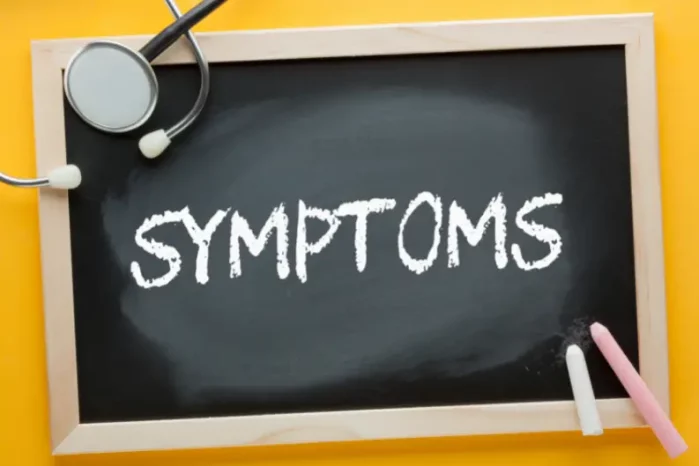Excess sugar in the body, medically referred to as hyperglycemia, is a common condition in individuals with diabetes, particularly type 2 diabetes. This condition can lead to a range of symptoms, some of which may be subtle, while others are more pronounced and potentially dangerous if left untreated. Understanding these symptoms is crucial for timely intervention and effective management of diabetes. In this article, we will delve into the various symptoms associated with excess sugar in the body, their underlying causes, and the importance of early detection and management.
Understanding Hyperglycemia
Hyperglycemia occurs when there is an excessive amount of glucose in the bloodstream. This can happen for several reasons, including insufficient insulin production, the body’s inability to effectively use insulin (insulin resistance), or a combination of both. Insulin is a hormone produced by the pancreas that helps regulate blood sugar levels by facilitating the uptake of glucose into cells, where it is used for energy. When this process is disrupted, glucose accumulates in the blood, leading to hyperglycemia.
Common Symptoms of Excess Sugar in the Body
1. Increased Thirst (Polydipsia)
One of the earliest and most common symptoms of hyperglycemia is increased thirst. When blood sugar levels are high, the body attempts to expel the excess glucose through urine. This leads to dehydration, prompting the individual to drink more water to compensate for the fluid loss. Persistent and excessive thirst can be a significant indicator of uncontrolled blood sugar levels.
2. Frequent Urination (Polyuria)
Frequent urination is closely linked to increased thirst. As the kidneys filter excess glucose from the blood, they excrete it along with water, resulting in increased urine output. Individuals with hyperglycemia may find themselves urinating more often than usual, including during the night (nocturia). This symptom can be particularly disruptive to daily life and may indicate that blood sugar levels are consistently high.
3. Extreme Hunger (Polyphagia)
Despite consuming regular meals, individuals with high blood sugar levels may experience extreme hunger. This occurs because the body’s cells are unable to utilize glucose effectively due to insulin resistance or lack of insulin. As a result, the cells signal to the brain that they need more energy, leading to increased hunger and food intake. However, this does not necessarily lead to weight gain, as the body is unable to properly use the consumed glucose.
4. Unexplained Weight Loss
While increased hunger is a common symptom, some individuals with hyperglycemia may experience unexplained weight loss. This paradox occurs because the body, unable to use glucose for energy, begins to break down muscle and fat stores for fuel. This can lead to significant and unintended weight loss, which may be a red flag for poorly managed diabetes.
5. Fatigue and Weakness
Chronic fatigue and weakness are also common symptoms of hyperglycemia. When cells are deprived of glucose, their primary energy source, the body lacks the fuel it needs to perform daily activities. This can result in a persistent feeling of tiredness and overall weakness, even after adequate rest.
6. Blurred Vision
High blood sugar levels can affect the eyes, leading to blurred vision. This occurs due to changes in fluid levels in the eye, which can cause the lens to swell and alter its shape. Blurred vision may come and go with fluctuating blood sugar levels and can be an early warning sign of diabetes-related eye complications, such as diabetic retinopathy.
7. Slow-Healing Wounds and Frequent Infections
Hyperglycemia can impair the body’s ability to heal wounds and fight infections. High blood sugar levels can damage blood vessels and nerves, reducing blood flow and weakening the immune system. As a result, cuts, sores, and bruises may take longer to heal, and individuals may experience frequent infections, such as urinary tract infections and skin infections.
8. Numbness and Tingling in Extremities
Nerve damage caused by prolonged high blood sugar levels, known as diabetic neuropathy, can lead to numbness, tingling, or a burning sensation in the hands and feet. This condition can be painful and debilitating, significantly affecting an individual’s quality of life. Early detection and management are crucial to prevent further nerve damage.
9. Dry Mouth and Skin
Excess sugar in the body can cause dehydration, leading to dry mouth and dry, itchy skin. Dehydration reduces saliva production, resulting in a persistent dry feeling in the mouth. Similarly, the skin may become dry and prone to cracking, increasing the risk of infections.
10. Increased Susceptibility to Yeast Infections
High blood sugar levels create an environment conducive to the growth of yeast, particularly Candida species. This can lead to recurrent yeast infections, especially in warm, moist areas of the body, such as the mouth (oral thrush), genital area, and skin folds. Women may experience frequent vaginal yeast infections, which can be both uncomfortable and difficult to manage.
Causes and Risk Factors
Several factors can contribute to hyperglycemia, including:
Insufficient Insulin Production: In individuals with type 1 diabetes, the pancreas produces little to no insulin, leading to high blood sugar levels. In type 2 diabetes, the pancreas may produce insulin, but not enough to meet the body’s needs.
Insulin Resistance: In type 2 diabetes, the body’s cells become resistant to the effects of insulin. This means that even though insulin is present, glucose cannot enter the cells effectively, leading to high blood sugar levels.
Dietary Choices: Consuming large amounts of sugary or carbohydrate-rich foods can cause spikes in blood sugar levels. Individuals with diabetes need to monitor their carbohydrate intake carefully to manage their blood sugar effectively.
Physical Inactivity: Regular physical activity helps the body use glucose more effectively. A sedentary lifestyle can contribute to insulin resistance and high blood sugar levels.
Stress: Physical or emotional stress can cause the body to release hormones that raise blood sugar levels. Managing stress is an important aspect of diabetes care.
Illness: Certain illnesses and infections can cause temporary increases in blood sugar levels. It’s essential for individuals with diabetes to monitor their blood sugar closely when they are sick.
Complications of Untreated Hyperglycemia
If left untreated, chronic hyperglycemia can lead to a range of serious complications, including:
Cardiovascular Disease: High blood sugar levels can damage blood vessels and increase the risk of cardiovascular problems, such as heart disease and stroke.
Kidney Damage (Nephropathy): Excess sugar can damage the kidneys’ filtering system, leading to kidney disease and potentially kidney failure.
Nerve Damage (Neuropathy): Prolonged high blood sugar levels can cause nerve damage, resulting in pain, numbness, and mobility issues.
Eye Damage (Retinopathy): Hyperglycemia can damage the blood vessels in the retina, leading to vision problems and, in severe cases, blindness.
Foot Problems: Nerve damage and poor blood flow can lead to foot ulcers and infections, which may require amputation in severe cases.
Skin Conditions: High blood sugar levels can cause various skin problems, including bacterial and fungal infections, itching, and poor wound healing.
Managing Hyperglycemia
Effective management of hyperglycemia involves a combination of lifestyle changes, medication, and regular monitoring. Key strategies include:
Dietary Modifications: A balanced diet that is low in sugar and refined carbohydrates can help maintain stable blood sugar levels. Individuals with diabetes should work with a dietitian to create a meal plan that meets their nutritional needs while controlling blood sugar.
Regular Physical Activity: Exercise helps the body use glucose more efficiently. Aim for at least 150 minutes of moderate-intensity aerobic exercise per week, along with strength training exercises.
Medication: Depending on the type and severity of diabetes, medication may be necessary to manage blood sugar levels. This can include insulin injections, oral medications, or other injectable drugs.
Blood Sugar Monitoring: Regular monitoring of blood sugar levels is essential for managing diabetes. This can help individuals make informed decisions about their diet, activity level, and medication.
Stress Management: Techniques such as mindfulness, meditation, and deep breathing can help manage stress and prevent its impact on blood sugar levels.
Regular Medical Checkups: Routine visits to a healthcare provider are crucial for monitoring diabetes and detecting any complications early.
See also: What Is Type 2 Diabetes Also Known As?
Conclusion
Recognizing the symptoms of excess sugar in the body is essential for the timely diagnosis and effective management of diabetes. By understanding these symptoms and the underlying causes, individuals can take proactive steps to control their blood sugar levels and prevent serious complications. Through a combination of lifestyle changes, medication, and regular monitoring, it is possible to manage hyperglycemia and maintain a healthy, fulfilling life despite a diabetes diagnosis. If you or someone you know is experiencing symptoms of high blood sugar, it is important to seek medical advice promptly to ensure proper care and management.
Related topics:
What are Symptoms of High Insulin Levels


























